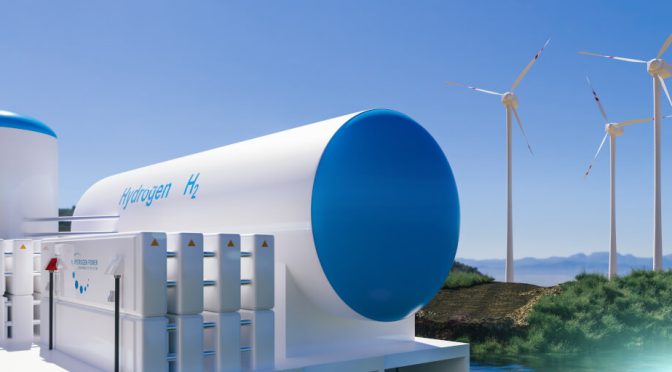Statkraft’s Ulf Eriksen gets real about the future of hydrogen, explaining why it’s essential and what makes a renewable energy company ideal to produce it.
In just about every climate report you read, it’s clear that the world must find ways to decarbonise everything, especially the so-called ‘hard-to-abate’ industries. This has put the spotlight on the potential of green hydrogen, a clean form of hydrogen that is produced using renewable power.
Heavy industrial processes, shipping and other long-distance transport will not be decarbonised by electricity from renewable sources alone. Hydrogen is clean and energy dense, making it better suited for energy-intense industrial operations. It’s often hailed as the green key to our industrial future, but also quickly rebutted as far too immature and slow moving in its development.
It’s in this context that Statkraft’s Hydrogen Vice President Ulf Eriksen is operating. He’s leading the change towards a hydrogen-filled future for the Norwegian renewables giant. While some may question Statkraft’s role in all this, Ulf says that it’s a natural fit, and something the company is determined to see across the net zero finish line.
What gives Statkraft an edge when it comes to producing hydrogen?
Ulf: Renewable energy has three major roles to play in our energy future. The first is to replace fossil fuels. The second is to electrify things like our cars, heating in our houses, and so on. And the third use is to produce green hydrogen. As the largest producer of renewable power in Europe, we have a key role to play in producing green hydrogen, and it’s a power carrier that we believe will be essential for our future energy mix.
Green hydrogen is still touted as quite immature. What is Statkraft doing to speed up its development?
Ulf: We see that to build our capabilities in this space, we must go into production and customer work now. We have started off by identifying the most likely places to produce it, as hydrogen is not easy to move. For us that means we should produce it where it will be needed. One of those places is Gothenburg harbour, for example, where we see many potential users in both maritime and land transport. This is a small project but an important starting point and learning opportunity for us.
Why is hydrogen better for heavy transport and industry than batteries, for example?
Ulf: If you remember the demonstration of the Tesla Semi, you may recall the five or six cables used to charge it simultaneously. You need about half a wind turbine in power per vehicle, which means that large scale trucking will be a struggle on batteries alone. Hydrogen on the other hand is denser and more efficient for these types of power intensive use cases.
When can we expect to see hydrogen trucks on the road?
Ulf: At Statkraft, we believe that the hydrogen must be available first, and then the trucks that use it will come. It will require a new line of trucks to be built, as this isn’t something that is easy to retrofit. Some see this as a chicken or the egg dilemma, but not us. We know that the hydrogen should be ready to go if we want to spark the necessary changes across industries.
It sounds like many steps and several barriers. Are we moving fast enough to meet our goals by 2050?
Ulf: In the bigger picture, we are moving too slowly. I’m still waiting to see a greater sense of urgency. According to a recent report from DNV, we are on track to only produce about half of the hydrogen we will need to power a net zero future.
What can help speed up development?
Ulf: The only thing that can help is funding. Governments will need to offer support, because currently hydrogen remains more expensive than fossil technologies. But we also need to consider the cost of not reaching climate targets. This will be significantly higher than what it will take to build up a thriving green hydrogen industry.


